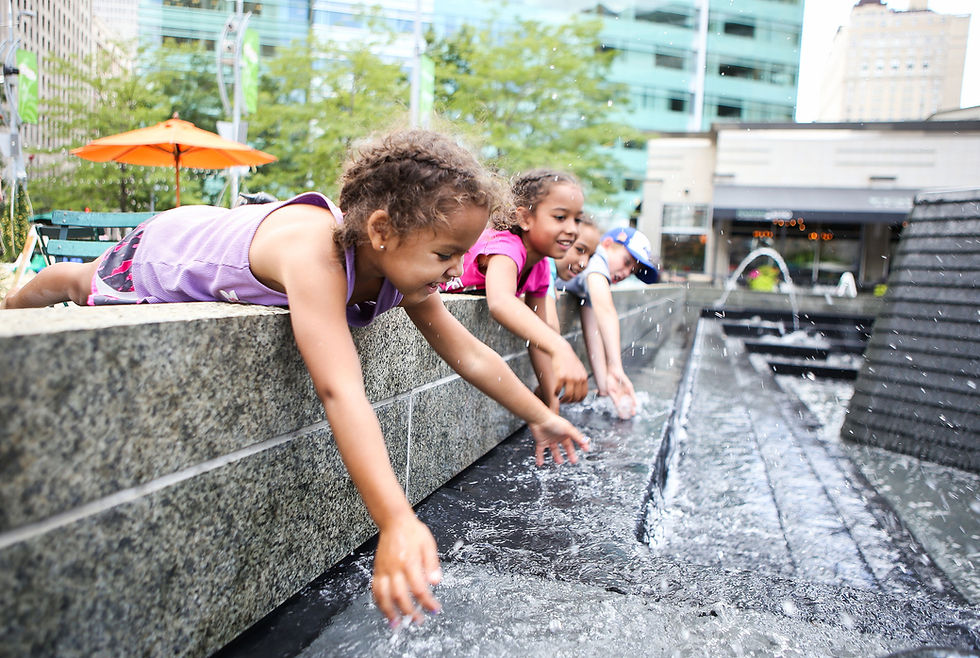The Brain is Wired for Play: Why It Matters More Than We Think
- Janie Terrazas

- May 2
- 4 min read

From a neuroscience and developmental psychology standpoint, the human brain is naturally wired for play. It is through play that children—and ultimately adults—develop the critical neural pathways required for emotional regulation, problem-solving, empathy, adaptability, and creativity. The tragedy is that in many modern societies, play is viewed as frivolous, unproductive, or even irresponsible once we reach adulthood.
🧒🏽 Why Free Play is Crucial in Childhood
Play is the Original Brain Gym
The prefrontal cortex—responsible for executive functions like planning, decision-making, and impulse control—lights up during imaginative and social play. When children engage in free, unstructured play, they're practicing skills like:
Negotiation and collaboration
Flexibility and adaptability
Delayed gratification
Perspective-taking

Imagination is Cognitive Alchemy
Play fuels the default mode network (DMN)—the brain network associated with imagination, introspection, and creativity. This is where a child learns to make sense of their inner world and express it outwardly through stories, movement, and make-believe. Without this, the imagination muscles atrophy, leaving adults disconnected from visioning, dreaming, and innovating.

Play Builds Emotional Intelligence
Through play, children experiment with different emotional states, social dynamics, and conflict resolution scenarios. It’s a safe space to feel anger, joy, fear, excitement—all without judgment. This strengthens the limbic system and its connection to the prefrontal cortex, allowing for better emotional regulation and self-awareness.

Play Rewires for Confidence and Self-Esteem
When a child is free to explore their interests through play, they begin to form an identity around competence and curiosity rather than performance and perfectionism. This fosters intrinsic motivation and a deeper, more stable form of self-worth.
What Happens When Play is Stripped Away
Sadly, many adults were raised in systems—family, school, religion—that suppressed or punished playfulness. Common dynamics include:
Shame-based control: “Stop being silly,” “Grow up,” “Act your age.”
Conditional affection: Love and attention tied only to performance or obedience.
Over-scheduling and over-testing: School systems often prioritize evaluation, productivity and achievement over enjoyment, play and creativity.
Emotional neglect: Parents unaware of how to nurture play may default to discipline and seriousness.
The result? Adults who:
Feel guilty for resting or playing
Can’t access their imagination or creativity
Disconnect from their bodies, joy, and spontaneity
See play as childish rather than medicinal
Reclaiming the Power of Play in Adulthood

As a mindfulness coach, I invite my clients to heal by reintroducing play as a pathway to wholeness. This isn’t just about being goofy—it’s about retraining the nervous system to experience safety, presence, and joy without the need to "earn" it.
Neuroscience affirms this too:
Neuroplasticity means we can rewire our associations with play.
Laughter, dance, art, movement, and pretend can activate the vagus nerve, helping us shift from sympathetic stress states into parasympathetic calm states.
💖 The Inner Child Doesn't Need to Be Fixed—They Need to Be Freed
By helping adults re-engage with play, you’re not only restoring lost joy; you're:
Rekindling imagination
Unlocking creative genius
Softening hardened emotional defenses
Rebuilding self-trust and self-worth
Cultivating present-moment awareness
✨ Affirmation for the Reclamation of Play:
“My playfulness is not immaturity—it’s a sacred part of my humanity. I honor it. I embrace it. I allow it to heal me.”

🌱 Journal Prompt Sheet: “Reclaiming the Playful Me”
Use these prompts during a weekly self-reflection or emotional healing session. Invite your clients to write freely, without judgment.
Week 1: Rediscovering What Was Lost
What were my favorite ways to play as a child?
What games, toys, or activities made me feel alive, free, and happy?
Was there a time I was shamed or scolded for playing or being silly?
How did my caregivers or school system view play and creativity?
Week 2: Noticing the Present-Day Gap
How do I feel about play now? What emotions come up when I think about being playful or silly?
In what ways do I deny myself joy, rest, or creativity?
What do I believe about adults who prioritize fun or downtime?
Week 3: Creating New Associations
What would it feel like to play without guilt? What activities would I explore?
What small, playful action can I take this week?
What message does my inner child need to hear to feel safe being seen and playful?
Week 4: Living from Play
How has embracing play shifted how I see myself?
What new creative ideas or emotions have emerged since giving myself permission to play?
How can I continue to incorporate micro-moments of play into my daily life?
🌟 Reparenting Play Plan: “Permission to Be Free”
This weekly action plan helps rewire the nervous system by pairing mindfulness with intentional play.
Week | Focus | Action Steps | Affirmation |
1 | Safe Exploration | Choose one playful memory and recreate it in a small way (coloring, skipping, blowing bubbles). | “I am safe to be lighthearted and explore what brings me joy.” |
2 | Silliness Practice | Practice laughing, making silly faces, or dancing wildly for 5–10 minutes. Let go. | “Being silly is medicine for my soul.” |
3 | Creative Curiosity | Try a new activity: finger painting, karaoke, doodling, or building with clay. | “I release perfection. I create because it feels good.” |
4 | Rest and Receive | Take a guilt-free nap, sunbathe, watch clouds. Give your body space to be. | “I do not have to earn my right to rest and joy.” |
💡Tip: Keep a "Play Journal" where you record what felt good, what came up emotionally, and what your inner child is asking for next.
For more on this topic check out my Brainz Magazine post titled, Why We Deny Ourselves Joy, Play, Pleasure, And Rest















Comments